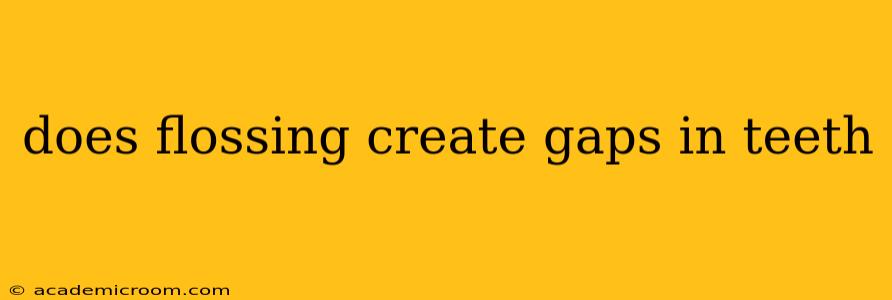The question of whether flossing creates gaps between teeth is a common concern among individuals committed to maintaining good oral hygiene. The short answer is no, proper flossing will not create gaps in your teeth. However, several factors can contribute to the perception of gaps or exacerbate existing problems. Let's delve into the details and address some frequently asked questions.
Why People Think Flossing Creates Gaps
The sensation of widening gaps often stems from the removal of food particles and plaque that have been wedged between teeth. When these substances are removed, the teeth might feel slightly looser, or the space between them might appear larger. This is purely a matter of perception; the teeth themselves haven't shifted. Improper flossing technique can, however, contribute to this feeling. Aggressive flossing or using excessive force can damage gum tissue, creating a temporary illusion of increased space.
What Causes Gaps Between Teeth?
Several factors can lead to gaps between teeth, and none of them are directly caused by correct flossing:
- Gum Disease (Periodontal Disease): This is a major contributor to tooth loss and gum recession, which can make teeth appear more spaced out. Untreated gum disease causes inflammation and infection, eventually damaging the supporting structures of the teeth.
- Genetics: Some individuals are naturally predisposed to having wider spaces between their teeth. This is often a hereditary trait.
- Tooth Loss: Losing a tooth can cause the surrounding teeth to shift, leading to gaps. This is a major reason why dental implants or bridges are often recommended after tooth extraction.
- Orthodontic Treatment (Braces): While braces are designed to move teeth into a better alignment, they might temporarily create gaps as part of the process. However, this is intentional and part of a larger treatment plan.
- Age-Related Changes: As we age, some gum recession is natural, which can sometimes make teeth appear more spaced apart.
How to Floss Properly to Avoid Gum Damage
Proper flossing technique is crucial to prevent any damage to your gums:
- Use Gentle Pressure: Don't saw or snap the floss between your teeth. Use a gentle back-and-forth motion to dislodge food particles and plaque.
- Curve the Floss: Curve the floss around each tooth in a "C" shape to reach the gumline effectively.
- Don't Snap the Floss: Avoid snapping the floss against the gums, as this can cause damage and bleeding.
- Use Fresh Sections of Floss: Use a fresh section of floss for each tooth.
Is It Possible for Flossing to Worsen Existing Gaps?
While correct flossing won't create gaps, aggressively flossing can exacerbate existing gum recession, which could make already existing gaps appear larger. If you already have noticeably wide gaps between your teeth, it's essential to consult a dentist or periodontist to determine the underlying cause and discuss appropriate treatment options.
When Should You See a Dentist About Gaps Between Your Teeth?
Schedule an appointment with your dentist if you notice:
- Increased spacing between teeth.
- Bleeding gums.
- Receding gums.
- Loose teeth.
- Persistent bad breath.
These symptoms can indicate underlying issues requiring professional attention.
In summary, proper flossing is a crucial part of maintaining good oral hygiene and does not cause gaps in your teeth. Any perceived widening of gaps is likely due to other factors, and addressing these issues is essential for maintaining healthy teeth and gums. If you have concerns, consult your dentist for personalized advice.
